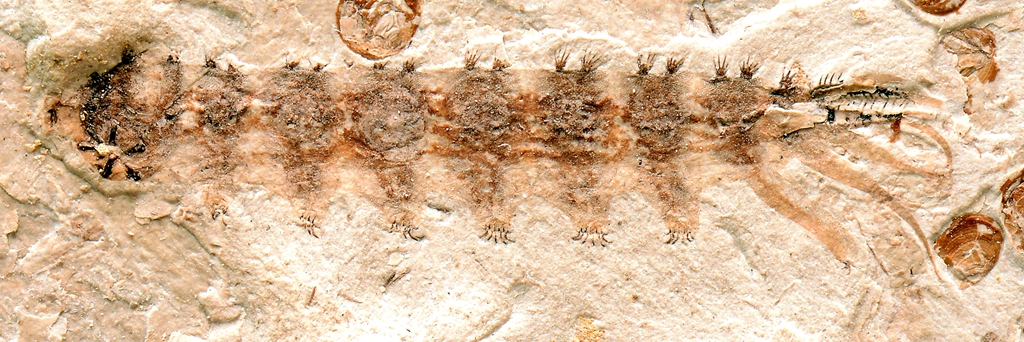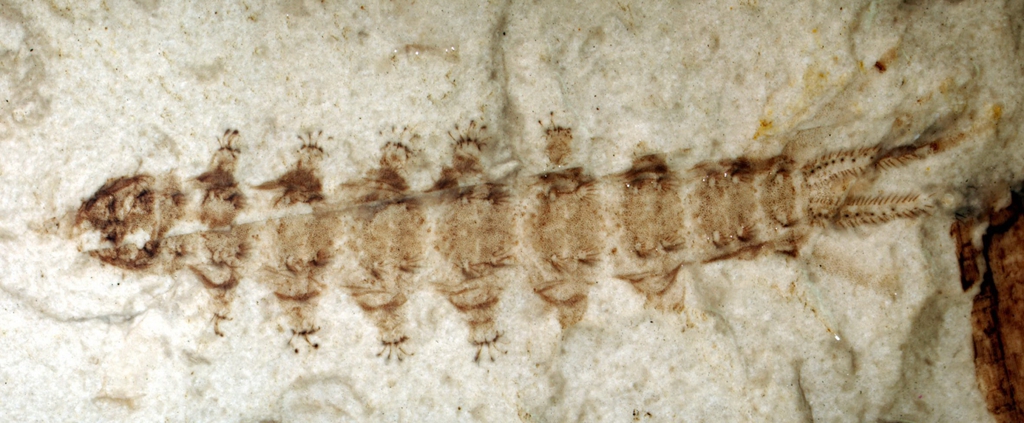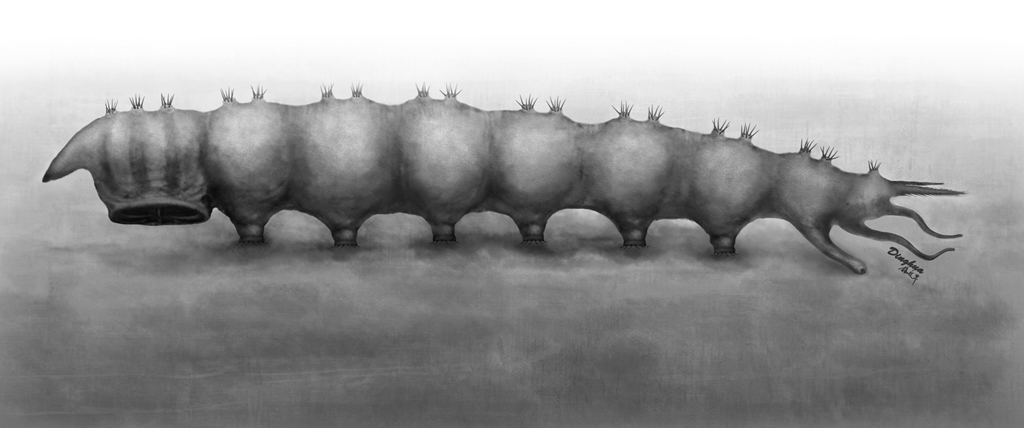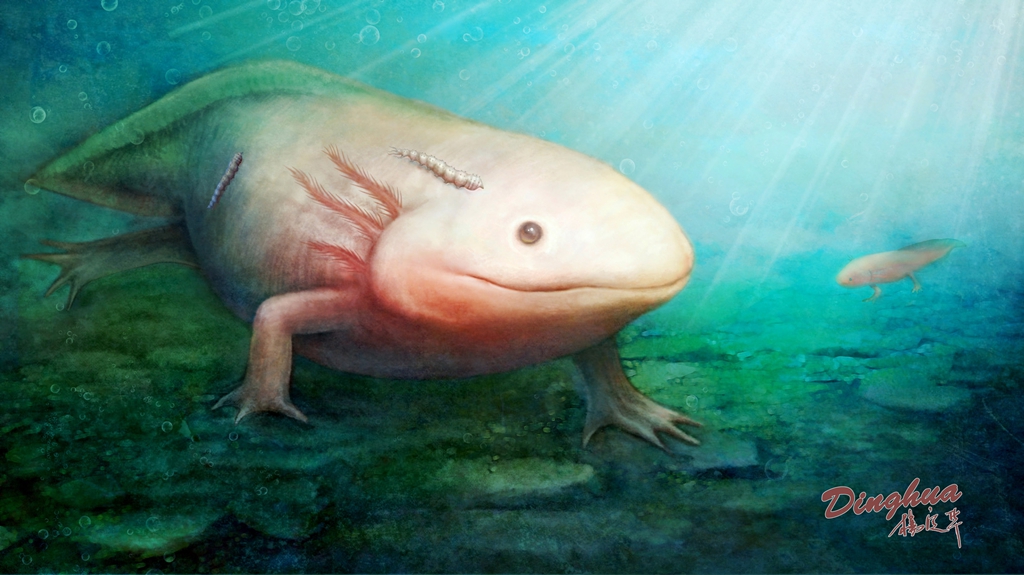The reconstruction of ancient insect ectoparasitism is challenging, mostly because of the extreme scarcity of fossils with obvious ectoparasitic features such as sucking-piercing mouthparts and specialized attachment organs. The early evolution of insect ectoparasites and their associations with hosts are still poorly known.
Professor ZHANG Haichun from Nanjing Institute of Geology and Palaeontology, Chinese Academy of Sciences and his team, cooperating with colleagues from Linyi University, Germany, USA and UK, described a bizarre fly larva (Diptera), named as Qiyia jurassica. The fossils are from the Jurassic deposits of Inner Mongolia, northeastern China. The larva represents a stem group of the tabanomorph family Athericidae, and exhibits adaptations to an aquatic habitat. The most notable structure of these newly discovered fossils is the ridged thoracic sucker which is a unique evolutionary adaptation among holometabolan insects. The round sucker has six radial ridges which are considered highly modified thoracic legs. These six robust ridges could increase both the suction area and surface friction, thus providing more adhesion and increasing lateral stability while reducing slippage, like the radial grooves in modern octopus suckers and supporting ribs in man-made suction cups. Taken together, the larva preserves an unusual combination of features including a thoracic sucker with six radial ridges, unique in insects, piercing-sucking mouthparts for fluid feeding, and crocheted ventral prolegs with upward directed bristles for anchoring and movement while submerged. In the Daohugou deposits fish are completely absent but salamanders are extremely abundant (several thousand specimens recovered to date). The Daohugou salamanders match well Q. jurassica in size as well as co-occurrence, suggesting a possible parasite-host relationship. The larva was an aquatic ectoparasitic insect, probably feeding on the blood of salamanders.
The discovery reveals an extreme morphological specialization of fly larvae, and broadens our understanding of the diversity of ectoparasitism in Mesozoic insects.
This research was supported by Chinese Academy of Sciences, National Basic Research Program and the National Natural Science Foundation of China.
The paper was published in eLife (Chen Jun, Wang Bo*, Engel M.S., Wappler T., Jarzembowski E.A., Zhang Haichun, Wang Xiaoli, Zheng Xiaoting, Rust J. Extreme adaptations for aquatic ectoparasitism in a Jurassic fly larva. eLife, 3:e02844. doi: 10.7554/eLife.02844.)

Fig. 1 Aquatic ectoparasitic fly larva (laterally preserved fossil).

Fig. 2 Aquatic ectoparasitic fly larva (dorsoventrally preserved fossil).

Fig. 3 Reconstruction of the larva in lateral view.

Fig. 4 Ecological restoration of the larva.
Download:
